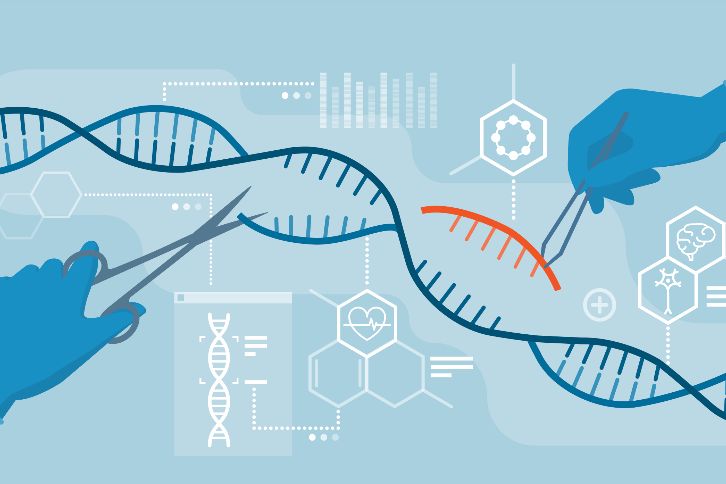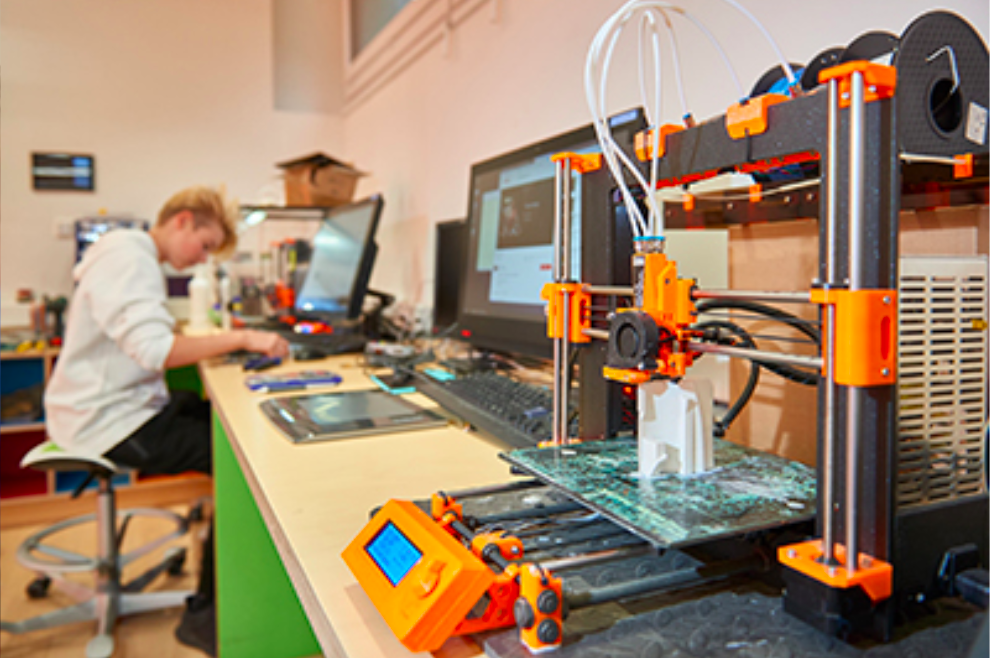By Anatole Tahintzi, Year 12
All of the traits which make us who we are, from the colour of our eyes to the shape of our face, are ultimately determined by our genes. Genes are a key part of any organism’s cells which control the chemical processes governing their operation and division, and ultimately the development and operation of the larger organism. An organism receives a portion of its genetic material from each parent, as can be seen anecdotally with kids often looking very similar to one or both parents. The turn of the 20th century saw great advancement in not only the understanding of the genome itself, but also how to alter it, in a process known as genetic engineering. The goal of genetic engineering is to alter the genes of cells to give an organism new, enhanced skills. It is a procedure that involves the modification of an organism’s DNA using various laboratorial techniques and cutting-edge technology.
Aside from through breeding and mutation, humans have only been able to alter DNA with genetic engineering since the 1970s. In 1952, the year after James Watson and Francis Crick demonstrated that the DNA molecule had a double-helix structure, Alfred Hershey and Martha Chase revealed that DNA also played a role in inheritance. In 1972, Paul Berg combined the DNA of the lambda virus and the SV40 monkey virus to produce the first recombinant DNA molecules. In 1974, by inserting foreign DNA into the mouse’s embryo, Rudolf Jaenisch produced the first transgenic mammal in history: the transgenic mouse. Entire companies were even created solely with a focus on genetic engineering. The first genetic engineering company, Genentech, was established by Herbert Boyer and Robert Swanson in 1976, and went on to synthesise various proteins such as insulin through genetic engineering. A discovery you likely have heard about in the news at some point occurred in 2012, when Jennifer Doudna and Emmanuelle Charpentier worked together to create the CRISPR/Cas9 system, a tool that allows for quick and precise changes to the genome of practically any organism.
A variety of methods are used in genetic engineering to purposefully alter genetic material, typically DNA, to improve form or function. Technologies for creating recombinant DNA include direct microinjection, bacterial or viral bacteriophages, or chemical splicing (and recombination) of various DNA strands. This could involve altering a single base pair (A-T or C-G), erasing a section of DNA, or incorporating new DNA. The development of treatments for previously incurable genetic conditions, brewing yeasts, as well as genetically engineered plants and animals have all been made possible with genetic engineering.
When modifying genes, two issues must be resolved. The first is deciding what kind of gene modification to introduce and how to apply that change to all the other cells that need to be altered to produce the desired result. There are various possibilities for the type of gene modification. “Homologous replacement” refers to the process of replacing DNA within a gene with DNA from another source. A gene might also be simply introduced, made to mutate (change structure), or its activity could be stopped by “turning it off” with a chemical. Numerous methods exist for extending the necessary genetic changes into all the cells. If the transformed cell is a reproductive cell, then a small number of cells may be changed, and the change may eventually spread to the other somatic cells, which are created as the organism develops. However, because there are so many somatic cells, it would be impossible to change each one separately in an already grown organism. Major organs like the heart and liver have too many cells for them to change one at a time. Instead, a popular strategy to access a high volume of cells is to utilise a carrier, or vector, which can be a specific chemical agent or an organism such as a virus. The genetic material is injected into the vector, and as it reproduces and “infects” the target cells, it spreads this new genetic material. Chemicals and fat particles have also been utilised as vectors since they can pass through cell membranes and carry new genetic material inside cells. However, to infect heart cells without also infecting and altering all of the body’s other cells, a very particular type of vector would be required. Thus, this is a very active field of research.
Despite its fascinating and life-changing applications, genetic engineering is not perfect. Several important ethical questions have been raised by genetic engineering. For instance, in the field of agriculture, ethicists have drawn attention to potential risks to human health posed by genetically modified crops and livestock, as well as to moral worries regarding the treatment of animals and the environmental effects of genetic engineering. The screening and editing of embryos to remove or add different medical and/or cosmetic traits create ethical questions in the context of reproduction. This use of genetic engineering brings to mind the historical eugenics movements in the United States and Nazi Germany.
Overall, though genetic engineering is an incredibly powerful tool, with the potential to save lives and improve the functioning of organisms, its ethical implications must be considered to ensure the technology is purely used for the betterment of society.




Great article as always! I didn’t know viruses could be used in such a fascinating way! How clever.